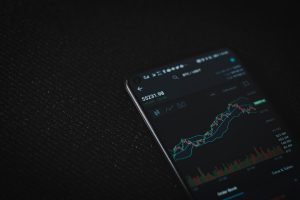Forex trading is a high-risk activity that requires traders to have a sound understanding of various concepts, including stop-out levels. A stop-out level is a point at which a broker will automatically close out a trader’s positions if their account balance falls below a certain level. In this article, we’ll explain in-depth how to calculate stop-out levels in forex.
What is Stop-Out Level?
Stop-out level is the point at which a broker will automatically close out a trader’s positions if their account balance falls below a certain level. The stop-out level is typically set by the broker and can vary depending on the broker’s policies and the trader’s account type. In forex trading, the stop-out level is usually expressed as a percentage of the account’s margin.
For example, if a trader’s account has a margin call level of 100%, then the stop-out level might be set at 50%. This means that if the trader’s account balance falls below 50% of their margin, the broker will automatically close out all of their positions to prevent further losses.
How to Calculate Stop-Out Level?
Calculating the stop-out level requires an understanding of several key concepts, including margin, leverage, and the broker’s policies. Here’s a step-by-step guide on how to calculate stop-out levels in forex:
1. Understand Margin
Margin is the amount of money required to open a position in forex trading. It is essentially a deposit that a trader must maintain in their account to cover potential losses. Margin is expressed as a percentage of the total value of the position that a trader wants to open.
For example, if a trader wants to open a position worth $10,000 and the margin requirement is 2%, then the trader would need to deposit $200 in their account to cover potential losses.
2. Understand Leverage
Leverage is a tool that allows traders to control larger positions with a smaller amount of capital. It is expressed as a ratio of the total value of the position to the trader’s margin.
For example, if a trader has a margin of $500 and uses a leverage ratio of 1:100, they can control a position worth $50,000. This is because the leverage ratio of 1:100 means that for every $1 of margin, the trader can control $100 of the position.
3. Determine the Margin Call Level
The margin call level is the point at which a trader’s account balance falls below the required margin. When this happens, the broker will issue a margin call and ask the trader to deposit more money into their account to cover the shortfall.
For example, if a trader has a margin call level of 100%, they will receive a margin call if their account balance falls below the required margin. If the trader fails to deposit more money into their account, the broker will close out their positions to prevent further losses.
4. Determine the Stop-Out Level
The stop-out level is typically set by the broker and is expressed as a percentage of the account’s margin. It is the point at which the broker will automatically close out a trader’s positions to prevent further losses.
For example, if a trader has a stop-out level of 50%, the broker will automatically close out all of their positions if their account balance falls below 50% of their margin.
5. Calculate the Stop-Out Level
To calculate the stop-out level, you need to know the margin call level and the stop-out level. The formula for calculating the stop-out level is as follows:
Stop-Out Level = Margin Call Level / 2
For example, if a trader has a margin call level of 100%, the stop-out level would be 50%. This is because the formula for calculating the stop-out level is 100% / 2 = 50%.
Conclusion
Stop-out level is an important concept in forex trading that traders need to understand to manage their risk effectively. It is the point at which a broker will automatically close out a trader’s positions if their account balance falls below a certain level. Calculating the stop-out level requires an understanding of margin, leverage, and the broker’s policies. By following the steps outlined in this article, traders can calculate the stop-out level and manage their risk effectively.





